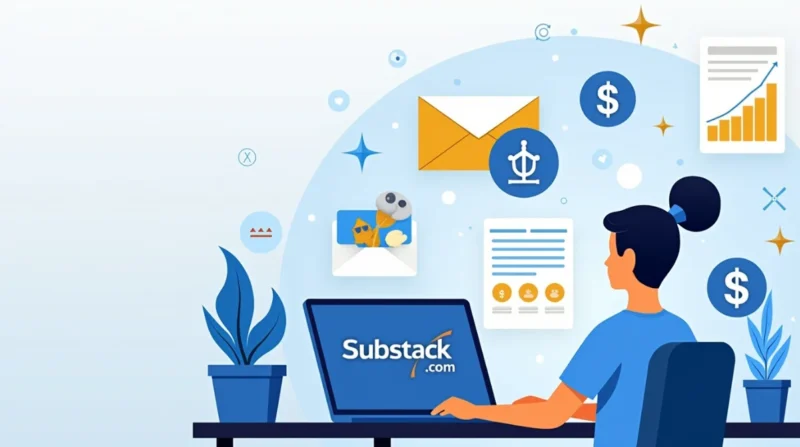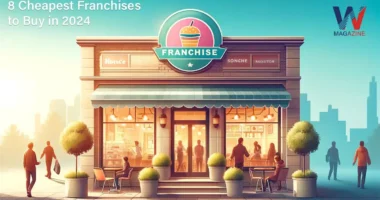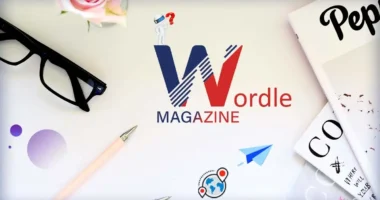Table of Contents
- Why Substack.com Works for Business?
- Substack.com vs. Traditional Email Marketing
- Building Your Substack Strategy
- Growing and Engaging Your Audience
- Monetization for Business
- What Brands Are Doing?
- Pros and Cons Overview
- Best Practices to Follow
- Staying Ahead with Google’s Latest SEO
- How to Begin Step by Step?
- FAQ
- Conclusion
Substack.com offers businesses a fresh way to talk directly to readers through newsletters, videos, and podcasts all in one place. It’s not just an email tool but a way to build community, engage customers, and grow trust in a simple, authentic way. Here’s how to use it well for your brand.
Why Substack.com Works for Business?
Substack is built for publishing + email + community, unlike typical tools that separate writing and sending. When you hit publish, your post goes straight to your readers’ inboxes and stays on your Substack page no extra steps needed. It also supports podcasts, videos, and public discussions, so you can mix formats and keep things engaging. For brands, Substack offers a sense of community, with chats, comments, and notes that make communication two-way and personal.
Substack.com vs. Traditional Email Marketing
Substack isn’t a full email marketing tool like Klaviyo or Mailchimp. It doesn’t offer automation, audience segmentation, or fancy analytics. Businesses that want a newsletter format to educate, connect, and tell stories will find Substack a great fit, but if you need product funnels, abandoned cart reminders, or dynamic segmentation, you’ll likely need both Substack and a marketing platform.
Building Your Substack Strategy
Set Up Anchor Content
Before launch, publish 3–5 “anchor” posts that showcase your brand voice, expertise, and value, for example, industry insights, helpful guides, or behind-the-scenes stories, pinkdogdigital.com.
Promote Across Channels
Invite people to your Substack via social media, email footers, your website, and even offline pitches (e.g, “Get weekly tips in your inbox, subscribe now!”).
Incentivize with Exclusives
Offer subscriber‑only perks: early access to content, product launches, insider webinars, or group chats at pinkdogdigital.com.
Growing and Engaging Your Audience
Leverage Substack features like Recommendations and Notes to tap into Substack’s community and be featured for free on milkkarten.net, buffer.com, and reddit.com
Cross-promote with similar organizations or related creators to reach new readers
Buffer.com, Reddit.com, Ask listeners to share, e.g., “Loved this? Forward it to a colleague.” Word of mouth truly works. Foster real interaction, reply to comments, ask for feedback, run polls, build relationships, not broadcasts.
Monetization for Business
Even if your newsletter is primarily marketing, you can still earn directly. Offer premium subscription tiers, for example, reports, deep-dive articles, or access to group videos/chat. Use subtle CTAs to promote your services or products within content, less pushy and often better received. Build member communities (Slack or Discord) as part of paid access.
What Brands Are Doing?
Major brands are already succeeding:
- Luxury labels like Tory Burch and Free People use Substack to strengthen audience relations, voguebusiness.com, and sociallypowerful.com.
uschamber.com,milkkarten.net,sociallypowerful.com. - Ghia’s Night Shade newsletter blends lifestyle and brand storytelling thoughtfully, sociallypowerful.com, uschamber.com.
- Smaller businesses share behind-the-scenes and product stories, connecting in a more personal tone than traditional email. In fashion, designers like Jane Herman and Clare Vivier share personal content and grow direct customer engagement outside social media noise, Vogue Business.
Pros and Cons Overview
Pros
- Integrated publishing, email, and community.
- Discoverability via the Substack network.
- Monetization flexibility.
- Rich media support.
- Community and direct reader interaction.
Cons
- Less marketing automation than specialized platforms.
- Paid conversion rates can be low (2–5%).
- Limited branding/design options.
- Lack of segmentation and detailed analytics.
- Risk of newsletter fatigue in crowded niches.
Best Practices to Follow
- Quality over quantity: post when you have help or insight, not just for consistency’s sake, hellooperator.substack.com, reddit.com, milkkarten.net.
- Stay authentic: personal stories resonate more than polished ads.
- Invite conversation: actively enable comments, replies, and ask questions.
- Track key metrics: open rate, clickthrough, subscriber growth. Perhaps integrate with your CRM via export or pinkdogdigital.com, minimadesigns.com.
- Repurpose smartly: extract blog snippets as carousels or posts, cross-post in social, but always link back to Substack, reddit.com.
Staying Ahead with Google’s Latest SEO
Google now Favors original, helpful, people‑first content over keyword-stuffed copy. Substack’s friendly, useful tone aligns perfectly. To rank well:
- Use substack.com naturally in titles, headings, and context (“Start your Substack.com newsletter.”)
- Keep paragraphs short and readable.
- Answer common questions upfront.
- Include internal links to earlier posts.
- Add schema via embedded headings/lists automatically on Substack pages.
How to Begin Step by Step?
- Create your Substack, choose a name similar to your brand, and set free/premium settings.
- Draft anchor content: introduce your team, share expertise, and explain why you’re here.
- Activate features enable comments, chat, and Notes.
- Connect and promote the link everywhere and invite known partners/readers.
- Stick to a schedule, decide weekly, bi‑weekly, or monthly, and keep it going.
- Review analytics monthly to see what topics resonate.
- Launch a paid tier once trust is built (usually after 300–500 engaged readers).
- Refine and iterate based on feedback, and be responsive to what readers want.
FAQ
Q1. What is Substack.com?
Substack.com is a platform where you can publish newsletters, articles, and even podcasts. It’s a tool for writers and businesses to share content directly with their audience and build a community.
Q2. How is Substack different from other email marketing tools?
Unlike email marketing tools like Mailchimp, Substack focuses on creating a simple, personal connection with readers through newsletters. It’s less about automation and more about sharing your stories and ideas.
Q3. Can Substack help my business grow?
Yes! Substack helps you build trust with your audience by sharing valuable insights, stories, or updates. A loyal audience can turn into customers over time.
Q4. Do I need technical skills to use Substack?
No, you don’t need any technical skills. Substack is user-friendly and provides simple tools for writing, publishing, and managing your content.
Q5. Can I make money using Substack?
Yes! You can offer paid subscriptions where readers pay for exclusive content, early access, or special perks. It’s a great way to earn while engaging your audience.
Conclusion
Substack.com opens a trusted, no-nonsense way for businesses to speak with their community, build real relationships, and even generate income. It’s not a replacement for full-featured email automation, but it’s a powerful tool for authentic storytelling, niche engagement, and brand building in an era where trust wins. Start smart, stay consistent, follow best practices, and let your audience do the rest.









